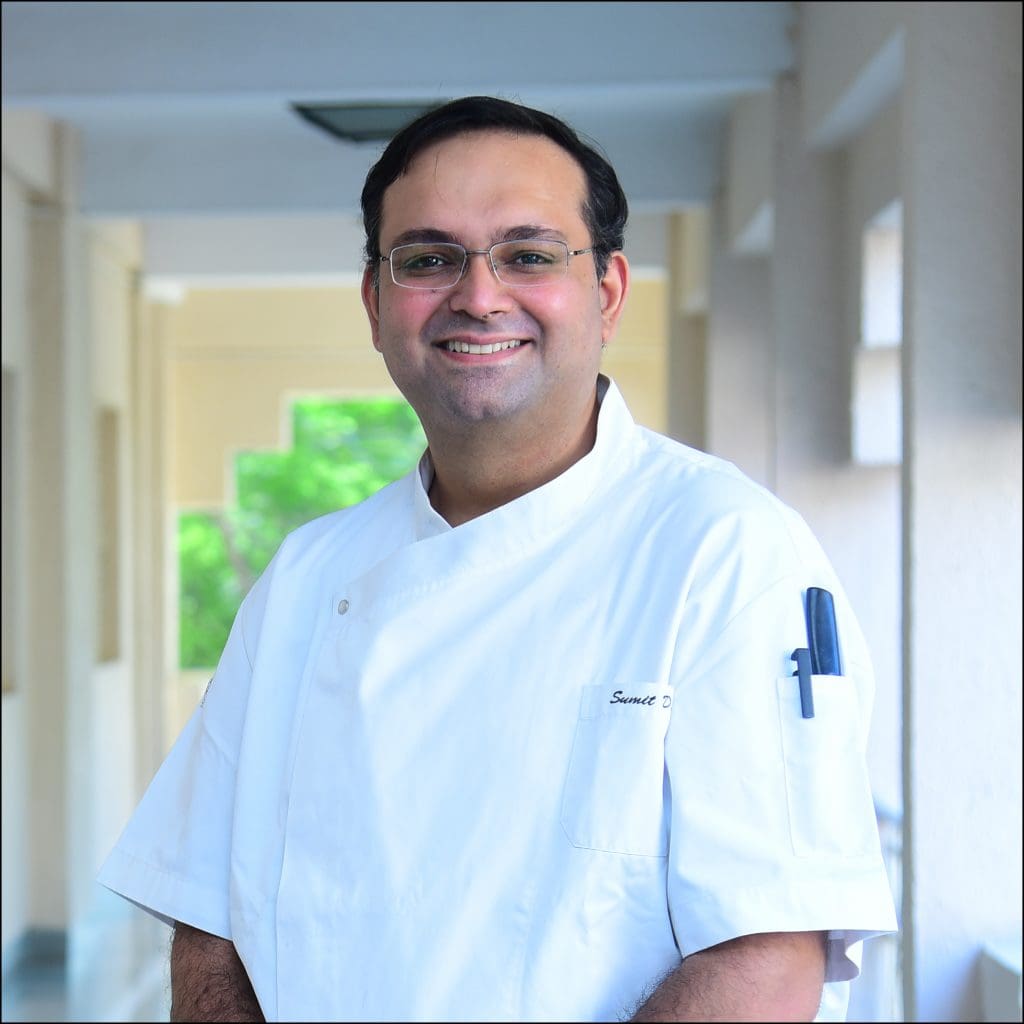Today’s Traveller teams up with the Institute of Hotel Management, Aurangabad (IHM Aurangabad) in a dynamic and progressive initiative – #HospitalityFirst – that will bring incisive reports and data-based analysis to the current situation and solutions for the Hospitality industry for its long term health and sustainability.

In this article, Sumit Daryanani, Assistant Professor – Food Production Operations at Institute of Hotel Management, Aurangabad (IHM Aurangabad) shares insights on the new industry dynamics and new trends which showcase new methods, technologies, and approaches in the food business.
Today’s Traveller: Can you shed some light on the current state of affairs in the food business?
Sumit Daryanani – IHM Aurangabad: There have been drastic alterations in menu consumption patterns affecting the food business from this difficult financial year 2020 – 21. The impact of these changes is still evident and will be seen for a long time. The food industry has witnessed a dreadful setback in terms of financial earnings from the conversion of eating habits. The variety of different options vary on account of factors from dietary changes to the availability of ingredients. Consumers are increasingly opting for healthier lifestyle modifications, immunity-boosting, and imperishable food items.
Today’s Traveller: How do you see the business evolving going forward? What are your predictions for 2021-22?
Sumit Daryanani – IHM Aurangabad: Re-conceptualising the year 2022 will require food businesses to focus on health-oriented restaurant expansions. According to a recent market research report, Technavio predicts a global food industry growth at a progression rate of a 6% CAGR until 2024. This has led to a multitude of food industry stalwarts coming forward with interesting trends.
The year 2021 will primarily focus on a post-pandemic industry revival, supplemented by various global impacts. After analysing current Indian market trends, here are some predictions on the most favourable ideologies going forward.
GO TRADITIONAL – Cooking methods are inclined towards forgotten traditional regimes. The health benefits, the value of traditional Indian foods, and classic cooking techniques have returned. Our native recipes and spices are celebrated the world over for being wholesome. They are packed with health benefits supporting immunity while reducing inflammation. The magic of Indian curries is exceptional, when cooked perfectly as supplements they prevent many immunity compromises. Indian pickles and chutneys, which are given the least attention, act as a natural probiotic.
FLEXITARIANISM – Embracing more plant-based products is a compelling shift from prior eating preferences. “FLEXITARIAN” does not simply mean being vegan but indicates greater inclusion of plant-based diets. Our population is seeking this balance in their eating preferences. A simple way of doing this is by mixing and matching alternatives in proper ratios, such as traditionally non-vegetarian meals being substituted with vegetarian options. Even, Chef Heston Blumenthal is employing a shitake-based substitute – Fable, in some braised meat recipes.
PROFITABLE FOOD WASTE – According to Baum and Whiteman (2021), the pre-covid era reflected a 40% food waste accounting for 130 billion pounds of edible material every year. A major concern was raised from covid induced hunger, as self-isolating families started to cook more and the food industry struggled with un-utilised food stocks. The resultant environmental impact was a decreased nutritional food value. The new era will bring more a-la-carte menus, smaller portion sizes, lesser buffet spreads, DIY kits, take away menus, and reusing leftovers or reinventing new recipes at home.
AROGYA SETU GYAN – This Government-sponsored app has influenced public opinion supporting these changing trends. There is a greater emphasis on eating local and seasonal food to support the economy. Our country produces abundant cereals, dairy, millets, and legumes, which when used in combination are a perfect source of essential amino acids.
CUISINE SOLUTIONS – The future of cuisine solutions is moderated by new and unknown ingredients, alternate sources of protein as well as the evolution of innovative techniques. The focus is shifting to safe practices rather than presentation flair. A greater value will be placed on a chef’s individual skills as compared to bulk production routines. This will impact the traditional work styles of chefs with multiple assistants. The repertoire of chefs will need to be highly enhanced in multiple cuisines rather than only one.
Today’s Traveller: Do you think the chefs in the industry can adopt any new methods or approaches to achieve profitability for their operations?
Sumit Daryanani – IHM Aurangabad: Here are two trends that showcase new methods, technologies, and approaches that reduce financial burdens and increase profitability levels.
Chef on call – platforms such as ‘authenticook’, ‘cozymeal’, ‘eatwith’ offers chefs an alternate working model with time, menu, location, and frequency flexibility, coupled with attractive pay. They also provide exposure to diverse flavour around parts of the country through an “authentic food experience with locals”.
Interactive multimedia – some new platforms have gained prominence in recent times and are going to stay on indefinitely for as long as we know. Online portals, android, and apple applications like ‘masterclass’ where chefs like Aaron Franklin and Thomas Keller are setting examples. This can also be a very useful platform for culinary and pastry schools in delivering practical knowledge to students.
Today’s Traveller: Name a chef who inspires you and Why?
Sumit Daryanani – IHM Aurangabad: Chef Jose Andres inspires me, He rightly suggests that food can be the solution supporting millions of jobs while also feeding multitudes of people in desperate need.
Read More: Hospitality First



